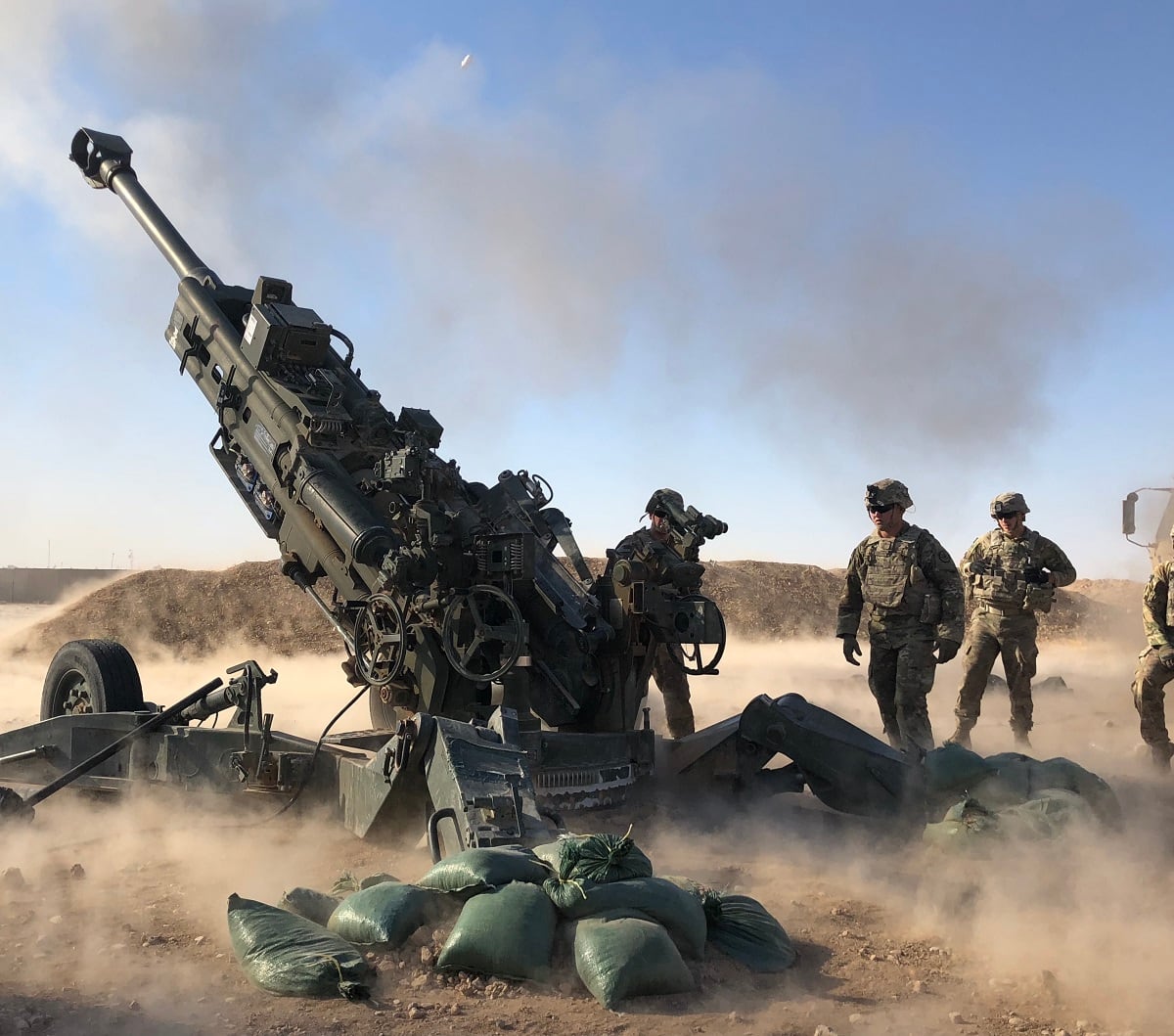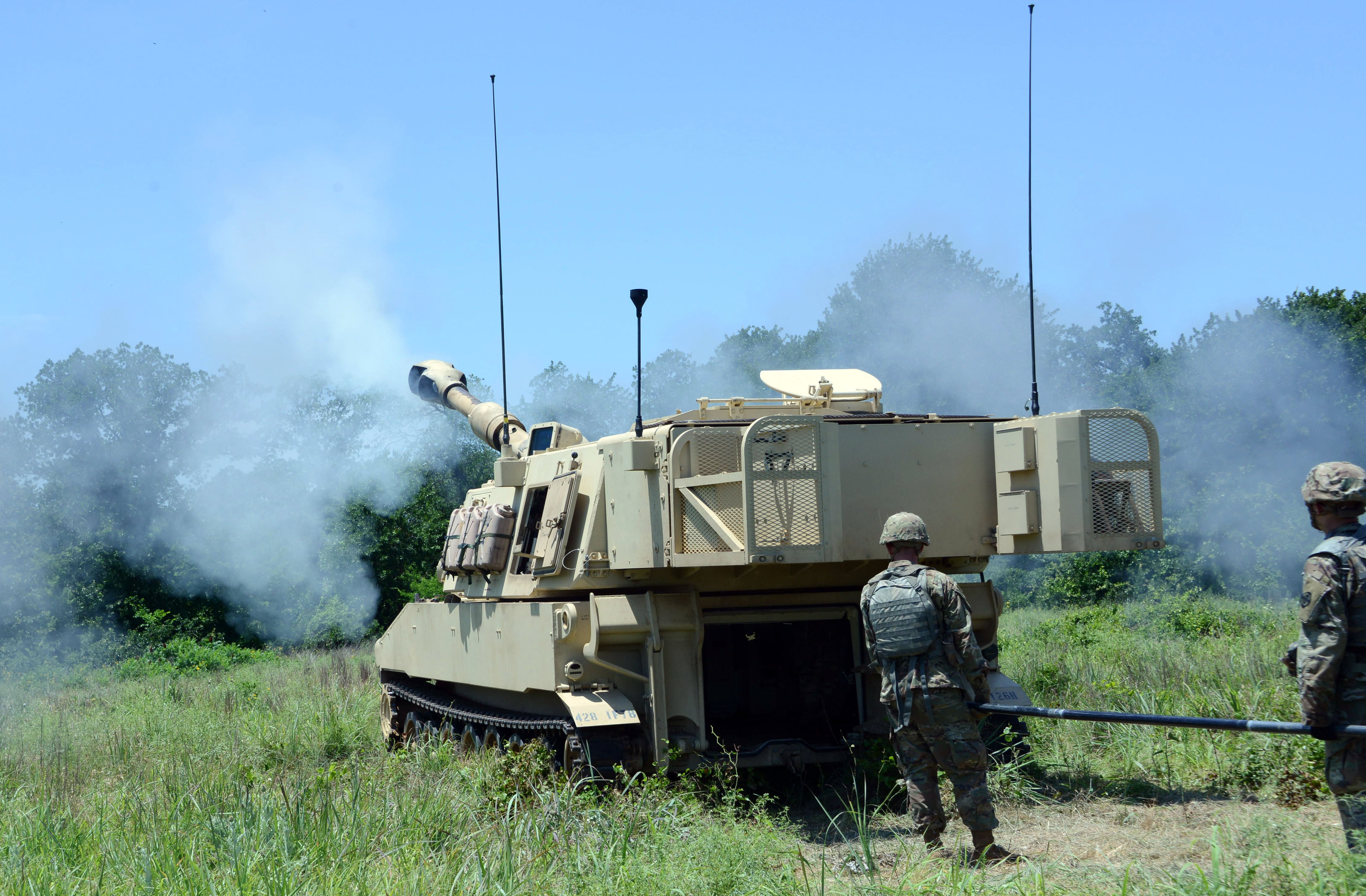Even as the Army finds high-tech ways to connect the lowest ground soldier to space systems, vulnerabilities in that way of war mean soldiers still have to use the basics their grandfathers practiced.
And it’s no different with the “red legs” of the artillery field.
A recent Army release showcased how soldiers are bringing back “charts and darts” at the Army’s Field Artillery School at Fort Sill, Oklahoma.
“Bringing back the charts is a big deal,” Staff Sgt. Chad Payne, an instructor for the 13J fire control specialist course, said in the release. “If you don't understand the chart, you won't actually understand what the automated system is doing for you.”
RELATED

That’s back after a decade of reducing manual training efforts at the school, said Col. Samuel Saine, assistant commandant.
But it was due to a high-tech reason — the Advanced Field Artillery Tactical Data System enabled users to “dramatically” speed up the firing process.
And that’s still being pursued.
The Cross Functional Team lead for Long Range Precision Fires, Col. John Rafferty, told audience members at a Center for Strategic and International Studies talk on that subject this past week that one of the biggest efforts will be creating a functional auto-loader for their self-propelled howitzers.
That’s even going to take longer than doubling the cannon’s range, he said.
The team has done testing to increase the barrel length by nearly 10 feet and plans to have the first battalion equipped by 2023.
But the autoloader design decisions, while expected for later this year, won’t be seen in formations until 2024, he said. And even though older attempts at autoloaders started the process, they weren’t designed for modern fuzing and GPS or other accuracy-enhanced munitions.
And even the targeting is seeing increased technological focus. Rafferty described the field’s targeting system is ripe for using an algorithm.
The “decide, detect, deliver, assess” method of targeting can be improved with algorithms, the colonel said.
For instance, an automated system could help the shooter in acquiring targets and deciding on the right munition or weapon system. Though the human would still make the call on when to fire.
“We’re going to have to train it, experiment with it,” he said.
But at the same time, those exquisite systems can both reveal themselves through electronic signatures and be targeted by enemy shooters and jammers.

When, as in Crimea and Ukraine, automation systems were downed there due to cyberattacks, that “woke people up” to the fragile nature of some platforms, Saine said.
About a year ago, the artillery school began re-emphasizing maps to plot and the math needed for artillery officers to do their job.
“They'll do manual operations until we know they fully understand the basics," Payne said in the release.
After that, students move on to automated systems, the 13J instructor said.
That makes it easier to incorporate degraded operations. Because once the system goes down either in the training scenario or the real world, soldiers break out their pins, pencils, charts and protractors.
And the standby panoramic telescopic sight and traverse hand wheel to run the howitzer barrel elevation.
“It's going to be important to know your charts and darts and how to go manual and still be able to continue on with your job, even when everything's down,” said Pvt. Cynthia Antaya, an artillery school student.
And more than a backup skill, the legacy training may have helped the artillery students get better at both old and new.
“What we found along the way is that we actually were increasing the proficiency of our Soldiers and our leaders,” Saine said in the release. “Because it helped them understand to a higher degree how everything worked together.”
Todd South has written about crime, courts, government and the military for multiple publications since 2004 and was named a 2014 Pulitzer finalist for a co-written project on witness intimidation. Todd is a Marine veteran of the Iraq War.





